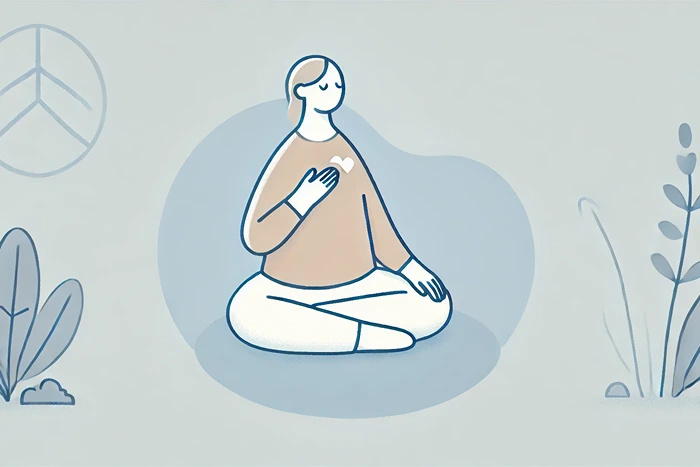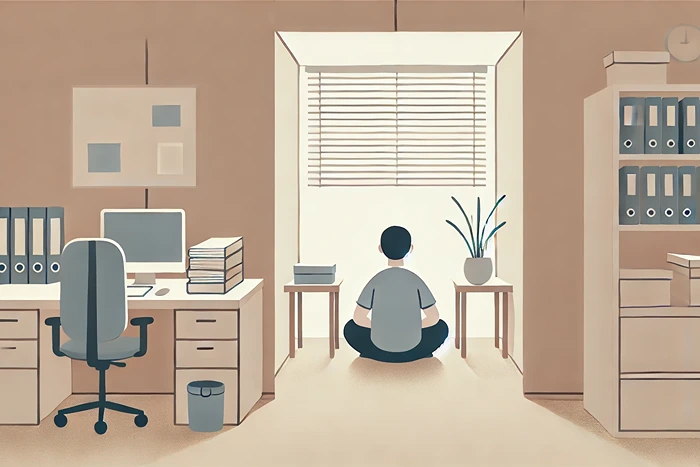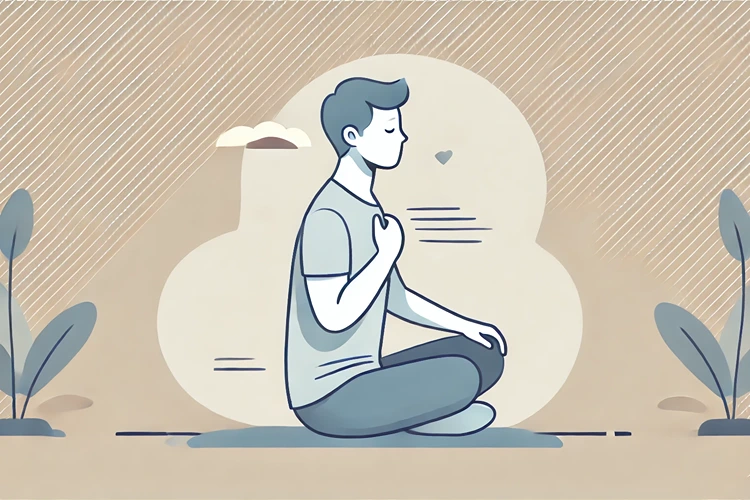
Breathing Techniques for Stress Reduction in High-Pressure Jobs
If you’re working in a high-pressure job, chances are you’re no stranger to stress. Whether you’re managing tight deadlines, juggling multiple tasks, or facing high expectations, it’s easy to feel overwhelmed. While stress may seem like a constant in these environments, there are ways to manage it better. One of the most effective tools at your disposal? Breathing techniques. Let’s explore how specific breathing techniques can help reduce stress in high-pressure jobs.
What Makes High-Pressure Jobs So Stressful?
Stress is a natural response when you feel like you’re being pulled in many directions at once. High-pressure jobs typically come with fast-paced environments, tight deadlines, and the need for multitasking, which can all contribute to elevated stress levels. But why do these jobs cause so much stress? The answer lies in your body’s natural stress response.
Understanding the Stress Response
When you’re stressed, your body enters a “fight or flight” mode, releasing hormones like cortisol and adrenaline. These hormones increase your heart rate, elevate your breathing, and give you that burst of energy needed to face immediate danger. While this response is crucial for survival, it becomes a problem when it’s triggered repeatedly over long periods—like in high-pressure work settings.
How Can Breathing Techniques Help in Stressful Work Environments?
Breathing techniques are a simple yet powerful tool to counteract stress. They help by engaging your parasympathetic nervous system, which calms your body down and reverses the effects of the stress response. But what exactly do these techniques do?
Lowering Cortisol Levels
High cortisol levels, which rise with prolonged stress, are linked to several negative health outcomes like poor sleep, weight gain, and decreased immune function. Deep breathing exercises can lower these levels, helping you feel calmer and more in control.
Helpful Hint:
Practice breathing exercises regularly, not just when you’re stressed. Building a habit helps your body become more resilient to stress over time.
Improving Focus and Clarity
When you’re in a high-pressure situation, your mind can become cluttered. Deep breathing increases oxygen flow to the brain, improving concentration and mental clarity, which helps you stay on top of tasks without feeling overwhelmed.
Effective Breathing Techniques for Stress Reduction
Not all breathing techniques are created equal, and some are better suited for specific situations than others. Let’s look at a few of the most effective ones for reducing stress in high-pressure jobs.
1. What is Diaphragmatic Breathing and How Does it Work?

Also known as “belly breathing,” diaphragmatic breathing helps calm your mind and body by fully engaging your diaphragm and allowing for deeper breaths.
How to Practice Diaphragmatic Breathing
- Sit or lie down in a comfortable position.
- Place one hand on your chest and the other on your abdomen.
- Inhale deeply through your nose, ensuring your abdomen expands while your chest remains still.
- Exhale slowly through your mouth, letting your abdomen fall.
- Repeat for 5-10 minutes, focusing on the rise and fall of your abdomen.
Diaphragmatic breathing helps reduce anxiety and can be particularly useful before important meetings or deadlines.
2. How Can Box Breathing Help Calm Your Nerves?
Box breathing is a simple but effective method that can quickly calm your nerves, making it perfect for fast-paced work environments.
Steps to Perform Box Breathing
- Inhale deeply through your nose for a count of 4.
- Hold your breath for a count of 4.
- Exhale slowly through your mouth for a count of 4.
- Hold again for a count of 4.
- Repeat this pattern for a few minutes.
This technique is ideal for moments when you need to quickly reduce stress and regain focus.
When to Use Breathing Techniques at Work
It’s one thing to know how to perform breathing exercises, but how do you incorporate them into your day without disrupting your workflow? Here are a few practical tips on when and where to practice your breathing techniques.
During Short Breaks
Even in the busiest of jobs, you can usually find a minute or two for a quick breathing exercise. Use your lunch break or even a bathroom break to practice a technique like diaphragmatic or box breathing.
Before or After Meetings
Meetings, especially ones that involve high-stakes decisions, can trigger anxiety. Take a minute before or after the meeting to practice breathing techniques. This can help calm your nerves and allow you to approach the situation with a clearer mind.
At the End of Your Day
When your workday is over, a few minutes of breathing exercises can help you transition from work to relaxation mode. This not only reduces stress but also improves your ability to unwind after a long day.
Helpful Hint:
Set reminders on your phone to practice breathing exercises during your workday. Even a few short sessions can help you stay calm and focused.
Making Breathing Techniques a Part of Your Daily Routine
The key to effective stress management with breathing techniques is consistency. Here’s how to build a habit around breathing techniques that will help reduce stress in your high-pressure job.
Start Small and Build Up
You don’t need to dedicate large chunks of time to these exercises. Start by practicing for just 5 minutes a day and gradually increase the time as it becomes a habit.
Pair Breathing Exercises with Existing Habits
Link your breathing exercises with something you already do daily, like making coffee or checking your email. This will make it easier to integrate them into your routine.
Track Your Progress
Use a journal or an app to track how often you’re practicing your breathing exercises and note any changes in your stress levels. This can help motivate you to stick with it.
Stats:
A study by Harvard Medical School found that deep breathing techniques significantly reduced anxiety levels in people working in high-pressure environments.
Can Breathing Techniques Improve Job Performance?
While breathing techniques are great for reducing stress, they can also improve your overall performance at work. Here’s how.
Enhanced Focus and Clarity
Breathing exercises increase oxygen flow to your brain, which can enhance focus and mental clarity. This helps you stay sharp and make better decisions under pressure.
Better Emotional Regulation
High-stress jobs often involve high-pressure situations that can trigger emotional responses. By practicing breathing techniques regularly, you’ll develop greater emotional control, allowing you to respond more calmly and thoughtfully.
Increased Resilience
Over time, regular breathing exercises can build resilience to stress, helping you bounce back faster from setbacks and maintain a more positive outlook.
Choosing the Right Breathing Technique for You
There are many breathing techniques for stress reduction, but not all of them will be the perfect fit for you or your work environment. It’s important to find the one that works best for your specific needs, stress levels, and job demands.
Which Breathing Technique is Best for Quick Stress Relief?
If you’re looking for fast relief from a stressful situation, techniques like box breathing or the 4-7-8 method can be extremely effective. Both of these techniques are designed to quickly calm your body and mind, making them ideal for use in high-stress moments at work, like right before a presentation or difficult conversation.
Is Diaphragmatic Breathing More Suitable for Long-Term Stress Management?
Diaphragmatic breathing, or belly breathing, is excellent for long-term stress management. This technique encourages full, deep breathing, which helps regulate your nervous system. It’s not only beneficial in the moment, but regular practice can build resilience to stress over time, reducing the frequency of stress-related symptoms like headaches or fatigue.
Do You Have Time to Practice Complex Techniques?
Some breathing techniques, like alternate nostril breathing (Nadi Shodhana), require a bit more time and focus. If you have a particularly busy schedule, sticking to simpler techniques like box breathing may be more feasible. However, if you have a quiet moment or are looking to add these exercises to your routine outside of work, more complex techniques can offer deeper relaxation and focus.
Common Breathing Techniques for Different Work Scenarios
| Work Scenario | Recommended Breathing Technique | Why It’s Effective |
|---|---|---|
| Preparing for a Presentation | Box Breathing | Quickly reduces nerves and brings focus, helping you stay calm under pressure. |
| Dealing with a Conflict | Diaphragmatic Breathing | Helps slow down your heart rate and reduce reactive emotions during tense situations. |
| Multitasking on Deadlines | 4-7-8 Breathing | Promotes mental clarity and helps prevent feeling overwhelmed by multiple tasks. |
| Post-Workday Recovery | Alternate Nostril Breathing | Balances both sides of the brain, promoting deep relaxation and recovery after a busy day. |
How Can Breathing Techniques Be Combined with Other Stress Management Practices?
While breathing techniques are powerful on their own, combining them with other stress management tools can amplify their effectiveness. Here’s how you can pair them with other strategies.
Physical Activity and Breathing Techniques
Regular physical activity helps reduce stress by releasing endorphins, the body’s natural mood elevators. Adding breathing exercises before or after physical activity can increase relaxation. For example, practicing diaphragmatic breathing after a short walk can help your body shift into full relaxation mode.
Mindfulness Meditation and Breathing Techniques
Mindfulness meditation pairs well with breathing techniques for stress reduction. While mindfulness helps you stay present and focus on the moment, breathing exercises help calm your nervous system. This combination can be particularly useful during high-stress workdays when your mind feels scattered. Set aside 10 minutes to focus on your breathing while practicing mindfulness, which can reduce anxiety and enhance your clarity at work.
Helpful Hint:
Combining physical activity and breathing exercises is a great way to reset during a busy workday. Consider a quick walk paired with 5 minutes of box breathing to restore your focus.
How to Stay Consistent with Breathing Techniques at Work
The biggest challenge with stress management strategies is consistency. Breathing techniques are most effective when practiced regularly, but it can be difficult to remember to take those breaks during a busy workday. Here are some tips to help you stay consistent.
Use Technology for Reminders
Leverage your smartphone or work calendar to set reminders for practicing your breathing techniques. Scheduling short, intentional breathing breaks throughout your day can keep stress levels manageable and prevent burnout.
Integrate Breathing into Your Existing Routine
Rather than viewing breathing exercises as something separate from your day, weave them into tasks you already do. For example, practice 4-7-8 breathing while waiting for a meeting to start or during a lunch break. By attaching breathing exercises to existing habits, you’ll be more likely to stay consistent.
Encourage Teamwide Stress Breaks
If possible, encourage your team or department to integrate stress breaks into your workday. This might include group breathing exercises, short mindfulness sessions, or simply stepping outside for fresh air. Having others on board can make it easier to stick with these practices.

How Often Should You Practice Breathing Techniques?
While even occasional use of breathing techniques can help, consistency is key for long-term benefits. Ideally, you should aim to practice a breathing technique at least once or twice a day, especially in high-pressure jobs where stress builds up throughout the day.
Short Breathing Sessions Throughout the Day
You don’t need to set aside large blocks of time to practice breathing techniques. Short sessions of 1-5 minutes can be incredibly effective when done multiple times a day. A few deep breaths before a meeting or during a stressful moment can reset your nervous system.
Longer Breathing Sessions for Deeper Relaxation
In addition to shorter sessions, consider setting aside 10-15 minutes a day for a longer breathing session, either in the morning or before bed. Longer sessions help deepen your relaxation response and can have a cumulative effect, building resilience to stress over time.
Stats:
According to a study by the American Institute of Stress, over 77% of people regularly experience physical symptoms caused by stress, including headaches, fatigue, and difficulty sleeping. Regular breathing exercises can significantly reduce these symptoms.
Advantages and Limitations of Breathing Techniques for Stress Relief
Pros
- Quick and easy to practice in any environment.
- Reduces cortisol levels, helping with long-term stress management.
- Improves focus and mental clarity during stressful situations.
- Does not require any equipment or extra time investment.
- Can be integrated into short breaks, making it convenient.
- Helps prevent burnout by managing chronic stress.
Cons
- May take time to build a habit and practice consistently.
- Some techniques may not be suitable for all work environments.
- Results can vary, and some may find the impact less immediate.
- In high-stress moments, remembering to practice can be difficult.
- Some breathing techniques may feel awkward in public settings.
FAQs
Wrapping Up
Stress is inevitable, especially in high-pressure jobs, but that doesn’t mean it has to overwhelm you. Using simple and effective breathing techniques for stress reduction can help you regain control, stay focused, and maintain emotional balance even in the most intense work environments. Techniques like diaphragmatic breathing, box breathing, and the 4-7-8 method can become valuable tools in your daily routine, helping you manage stress levels and improve your overall well-being.
By incorporating these practices consistently and pairing them with other stress management strategies, you’ll not only reduce stress but also enhance your productivity and performance. Remember, stress management is a journey, not a destination. Take small steps, practice regularly, and watch as these techniques transform how you handle the pressures of your job.


